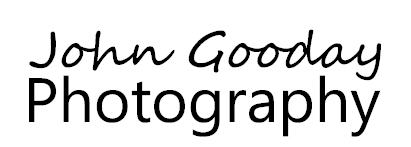This image, taken yesterday around noon, wouldn't have been possible without flash (well, I suppose that you could splice together different images in Photoshop to get something like it, but that's not quite the point). The problem here was the bright sunlight, which was lighting up the back of the fox, while most of the front of the face was in shadow. I say most: gaps in the foliage meant that a few little spots of bright light showed up as patches on the nose and forehead The difference in brightness between the light and dark areas was far too much for a digital camera's sensor to cope with. I was faced with the choice of setting the exposure to record the dark areas of the fox's face correctly which would result in the sunlit parts of the picture becoming white; or to expose for the bright areas of the picture which would leave the fox as a dark shadow. I suppose you could say that the light conditions were controlling the photograph. In cases like these, I like to turn the tables and try to control the light. Flash enables me to do this.
By using a flash gun to throw light onto the dark areas, you can reduce the differences between shadow and highlight to something that the camera can cope with - this is known as 'fill-in' flash. So, how do you do it? Well, it actually surprisingly easy. There are a number of different ways, but I'll just try to explain the one I use most often.
If you're trying to fix a situation like the one above (i.e. trying to tame the effects of bright sunlight), you'll almost certainly need a more powerful flash than those that come built into cameras. For the method I'm explaining, a flashgun that talks to your camera and performs 'TTL' flash is needed. TTL is a clever mechanism in which the flash fires twice, so quickly that you will see it as a single burst of light. On the first flash, the camera measures how much light bounces back from the target and uses this information to set the flash to fire at the right power to correctly illuminate the subject on the second flash, which is fired as the shutter opens. Nikon and Canon make a number of TTL 'Speedlites' (there are also plenty of 3rd party flash guns that will do the job from manufactures such as Metz and Sunpak to name but two). Other manufacturers also have dedicated TTL flashguns for their cameras.
So, all you have to do is put the flashgun on top of your camera, pointing at the subject, and press the shutter. Well, not quite. Sadly, the camera won't always get the calculation right, particularly of the dark/light area is a relatively small part of the image. In this case, you'll need to tell the flash to fire a bit more or less light by adding some flash exposure compensation (you'll need to check your camera manual for how to do this on your particular model, there may be a button or it might be in a menu).
The way I work on backlit images like this is to first set the exposure for the brightest are of the image (in this case, the white fur at the edge of the fox's mouth) with the flash turned off. Use the exposure compensation dial/menu on your camera to do this. Ideally, you want to get it so that the brightest parts of the image don't quite set off the flashing highlight warning on the playback screen. If the exposure compensation you dialled in was -2, then set the flash exposure compensation to + 2. If the exposure compensation was -1, then set flash exposure compensation to +1. Nine time out of ten, that should do the trick on the first shot. If not, just adjust the flash exposure compensation up or down and try again (assuming your subject hasn't run off at the first flash, of course).
To give you an idea of the difference the flash makes, here's another shot from the same set as above taken without flash.



